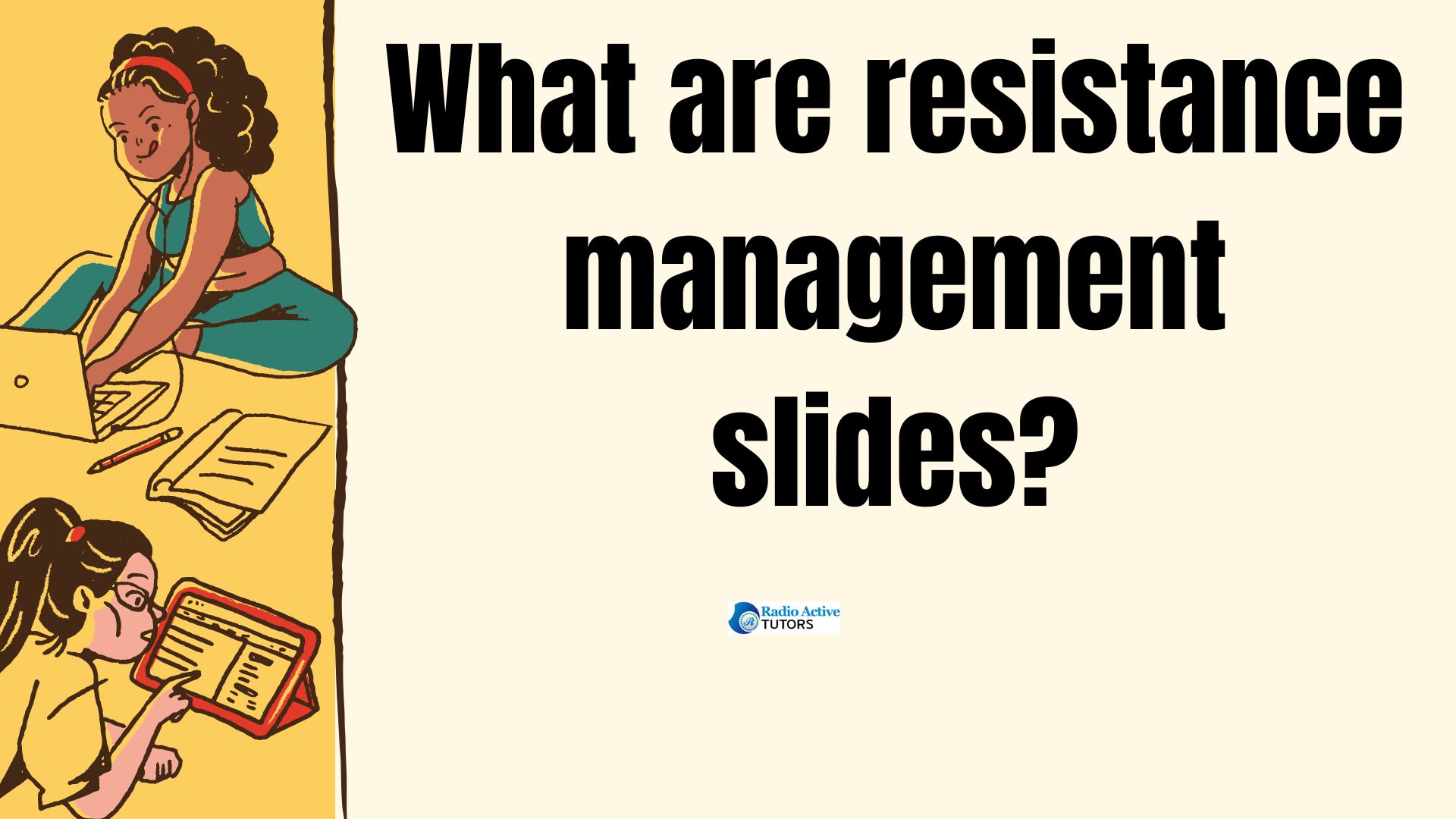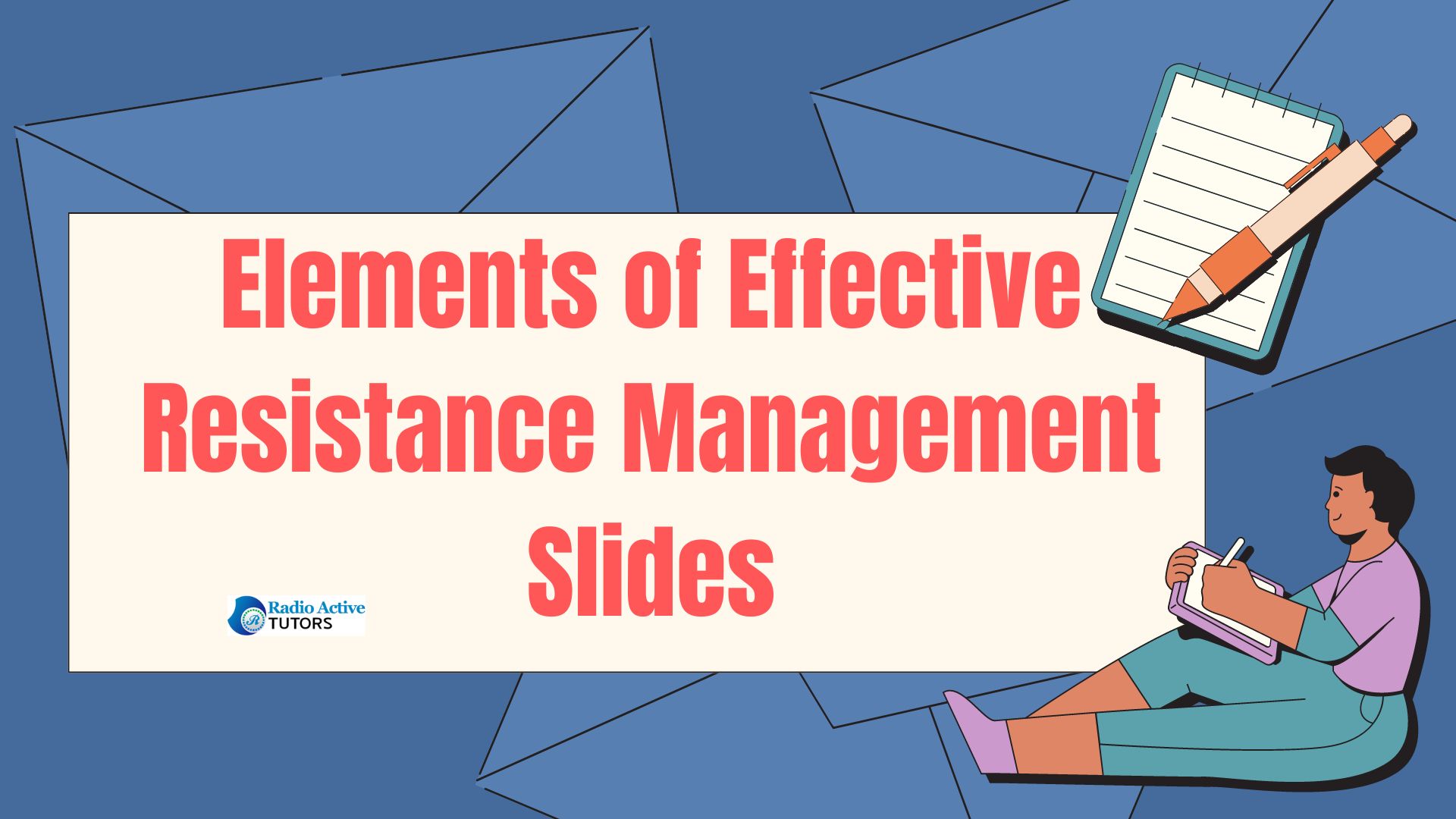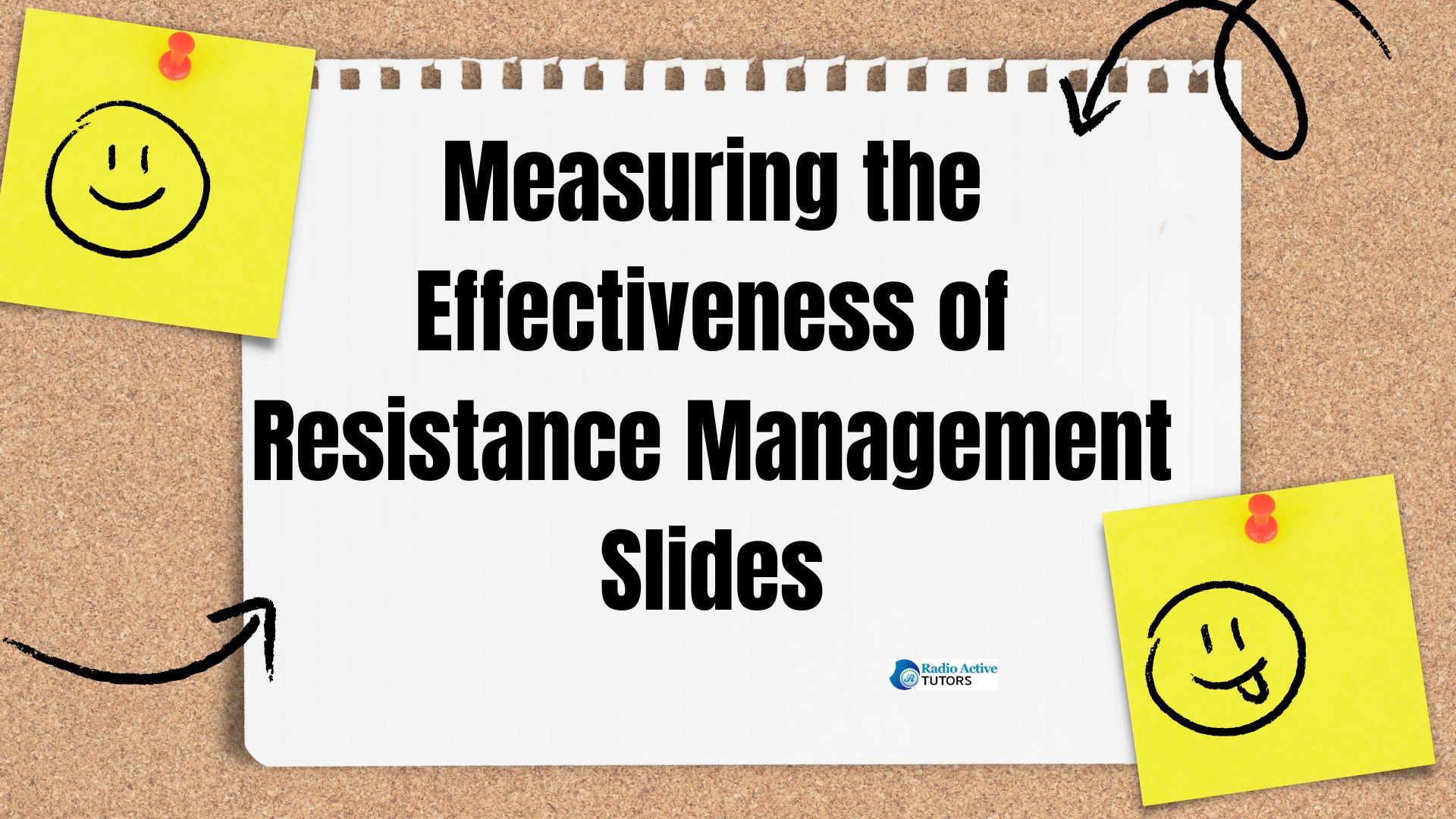Table of Contents
I. Introduction to Resistance Management Slides
II. The Role of Resistance Management Slides
III. Principles of Creating Effective Resistance Management Slides
IV. Elements of Effective Resistance Management Slides
V. Case Studies on Successful Resistance Management
VI. Tips for Improving Audience Engagement
VII. Designing Resistance Management Slides for Different Audiences
VIII. Measuring the Effectiveness of Resistance Management Slides
IX. Ethical Considerations in Resistance Management
X. The Future of Resistance Management Slides
XI. Frequently Asked Questions (FAQs)
I. Introduction to Resistance Management Slides
- What are resistance management slides?

Resistance management slides are a crucial component in the field of resistance management, particularly within agricultural and pest control contexts. These slides typically serve as educational and training tools designed to help practitioners understand and implement strategies to mitigate resistance development in pests or pathogens. The introduction to resistance management slides generally covers fundamental concepts such as the mechanisms of resistance, factors contributing to its development, and the economic and environmental impacts of resistance.
Additionally, these slides often outline integrated pest management (IPM) strategies, emphasizing the importance of rotating chemical classes, using non-chemical methods, and monitoring resistance levels. By providing a comprehensive overview, resistance management slides aim to equip stakeholders with the knowledge needed to preserve the efficacy of control measures and ensure sustainable pest and disease management practices.
- Importance of effective resistance management Slides
Effective resistance management slides are pivotal in the education and implementation of strategies to combat resistance in various fields, such as agriculture, pest control, and medicine. These slides play an essential role in illustrating the critical concepts and practical approaches needed to understand and address resistance. By providing clear, concise, and well-structured information, they help stakeholders—from farmers and pest control professionals to researchers and policymakers—grasp the significance of resistance management.
The introduction to resistance management slides typically highlights the economic, environmental, and health implications of resistance, underscoring the necessity of proactive measures. They also present integrated pest management (IPM) techniques, emphasizing the rotation of control methods and the use of non-chemical interventions. By fostering a comprehensive understanding and encouraging the adoption of best practices, effective resistance management slides contribute to sustainable practices and the long-term efficacy of control measures.
II. The Role of Resistance Management Slides
- How resistance management slides can mitigate challenges
Resistance management slides play a crucial role in mitigating challenges associated with resistance in various sectors such as agriculture, healthcare, and pest control. These slides serve as valuable educational tools that distill complex concepts into accessible, visual formats, making it easier for practitioners to understand the dynamics of resistance development and its implications. By providing detailed insights into the mechanisms of resistance, the factors that drive it, and the strategies to counteract it, these slides help in building a strong foundation of knowledge. They often include practical examples, case studies, and best practice guidelines, which are essential for designing effective resistance management programs.
Moreover, the slides emphasize the importance of integrated approaches, such as rotating different types of interventions and incorporating non-chemical methods, to slow down the development of resistance. By effectively conveying this information, resistance management slides enable stakeholders to implement informed and sustainable practices, ultimately reducing the prevalence of resistance and maintaining the efficacy of control measures.
- Key benefits of using resistance management slides
Resistance management slides offer several key benefits in addressing the challenges posed by resistance in fields such as agriculture, pest control, and healthcare. Firstly, they provide a clear and structured presentation of complex information, making it easier for stakeholders to understand the intricacies of resistance mechanisms and the factors that contribute to their development. This clarity enhances learning and retention, ensuring that practitioners can effectively apply this knowledge in real-world scenarios. Secondly, these slides often include practical examples, case studies, and visual aids that illustrate successful resistance management strategies, offering actionable insights and best practices.
Additionally, they promote the adoption of integrated approaches, such as rotating chemical treatments and utilizing non-chemical methods, which are crucial for sustainable resistance management. By fostering a comprehensive and nuanced understanding, resistance management slides help stakeholders implement more effective and sustainable practices, ultimately preserving the efficacy of control measures and mitigating the economic and environmental impacts of resistance.
III. Principles of Creating Effective Resistance Management Slides

- Clarity and simplicity in design
Clarity and simplicity in design are fundamental principles in creating effective resistance management slides. These elements ensure that the information is accessible and easily understood by a diverse audience, ranging from farmers and healthcare professionals to policymakers and students. Clear and straightforward slides use concise language, highlight key points, and avoid unnecessary jargon, making complex concepts more digestible.
Simple design features, such as consistent fonts, balanced use of colors, and well-organized layouts, help maintain the audience’s focus and enhance the overall learning experience. Visual aids, such as charts, graphs, and infographics, are used judiciously to illustrate important data and concepts without overwhelming the viewer. By prioritizing clarity and simplicity, resistance management slides become powerful tools for education and communication, effectively conveying essential information and best practices to manage resistance and sustain the efficacy of control measures.
The use of effective visuals is a crucial principle in creating impactful resistance management slides. Visuals such as charts, graphs, infographics, and images can transform complex data and concepts into easily understandable formats, enhancing comprehension and retention. Well-designed visuals break down intricate information into visually appealing and digestible segments, helping to illustrate trends, comparisons, and relationships that might be challenging to convey through text alone. For instance, a graph showing resistance trends over time can quickly convey the urgency of the issue, while infographics can succinctly present integrated pest management strategies.
Additionally, visuals can engage the audience more effectively, making presentations more dynamic and memorable. By incorporating clear and relevant visuals, resistance management slides can communicate critical information more efficiently, supporting better decision-making and implementation of resistance management practices.
- Incorporating storytelling techniques
Incorporating storytelling techniques is a powerful principle in creating effective resistance management slides. Storytelling can transform a series of slides into a compelling narrative that engages the audience and enhances their understanding. By framing the content as a story, presenters can introduce real-world scenarios and case studies that illustrate the challenges and successes in resistance management. This approach helps contextualize the data and concepts, making them more relatable and memorable.
A well-structured story arc, with a clear beginning, middle, and end, can guide the audience through the complexities of resistance mechanisms, the importance of management strategies, and the consequences of inaction. Using characters, conflicts, and resolutions, storytelling can evoke emotions and foster a deeper connection to the material. By weaving storytelling techniques into resistance management slides, educators and presenters can create a more engaging and impactful learning experience, encouraging stakeholders to adopt and implement effective resistance management practices.
- Ensuring audience interaction and engagement
Ensuring audience interaction and engagement is a vital principle in the creation of effective resistance management slides. Interactive elements such as questions, polls, and discussion prompts can transform a passive learning experience into an active one, fostering deeper understanding and retention of the material. Engaging the audience through interactive activities, such as case study analyses or group discussions, encourages them to apply concepts in real-world scenarios, reinforcing their learning. Additionally, incorporating multimedia elements like videos or animations can capture attention and illustrate complex processes in a more dynamic and accessible way.
Facilitating regular intervals for audience feedback and questions also creates a more participatory atmosphere, ensuring that the presentation addresses the specific needs and concerns of the audience. By prioritizing interaction and engagement, resistance management slides not only convey essential information but also inspire and empower the audience to implement effective resistance management strategies in their own practices.
IV. Elements of Effective Resistance Management Slides

- Choosing the right slide structure
Choosing the right slide structure is a crucial element in creating effective resistance management slides. A well-organized slide structure ensures that information is presented logically and cohesively, making it easier for the audience to follow and comprehend. Each slide should focus on a single key idea, using bullet points, headers, and subheaders to break down complex information into manageable chunks. Consistent formatting across slides helps maintain a professional appearance and aids in navigation, allowing the audience to anticipate the flow of information.
Visual hierarchy, established through the strategic use of font sizes, colors, and spacing, guides the audience’s attention to the most important points. Additionally, integrating sections such as an introduction, body, and conclusion within the slide deck can help frame the presentation effectively, providing clear transitions between topics. By choosing the right slide structure, presenters can enhance the clarity and impact of their resistance management message, ensuring that key concepts are communicated effectively and retained by the audience.
- Typography best practices
Typography best practices are essential in crafting effective resistance management slides. The choice of fonts, sizes, and styles can significantly impact the readability and visual appeal of the presentation. Using clear, legible fonts such as Arial, Calibri, or Verdana ensures that text is easily readable from a distance. It is important to maintain consistency by using no more than two or three different fonts throughout the slides—typically one for headings and another for body text.
Font sizes should be large enough to be readable, with headings generally between 24-36 points and body text between 18-24 points. Proper use of bolding, italics, and underlining can highlight key points without overloading the slides with excessive styles. Adequate spacing between lines (line height) and margins can prevent the text from appearing cluttered. Furthermore, choosing high-contrast color combinations between text and background enhances visibility and reduces strain on the eyes. By adhering to these typography best practices, resistance management slides can effectively communicate information in a clear and engaging manner.
- Color psychology and slide backgrounds
Color psychology and slide backgrounds play a crucial role in creating effective resistance management slides. The choice of colors can influence the audience’s perception, emotions, and attention. It’s important to select colors that complement each other and enhance readability, such as using dark text on a light background or vice versa. Neutral backgrounds like white or light gray are generally preferred as they provide a clean canvas and make the text easier to read. However, incorporating a few accent colors strategically can help emphasize important points or sections.
For example, using a contrasting color for headings or key information can draw the audience’s attention. Additionally, understanding color psychology—how different colors evoke specific emotions or associations—can help tailor the slide design to better resonate with the audience. Warm colors like red and orange can convey urgency or importance, while cool colors like blue and green can evoke calmness and trust. By applying color psychology and thoughtful background choices, resistance management slides can effectively communicate information and engage the audience more effectively.
- Utilizing charts, graphs, and diagrams effectively
Utilizing charts, graphs, and diagrams effectively is essential in creating impactful resistance management slides. Visual representations of data can help simplify complex information and make key trends or relationships more understandable to the audience. Choosing the right type of visual representation—such as bar charts, line graphs, pie charts, or diagrams—depends on the nature of the data and the message being conveyed.
Clear labels, legends, and titles should accompany each visual to ensure clarity and understanding. It’s important to keep visuals simple and uncluttered, focusing on the most relevant data points and trends. Color can be used strategically to differentiate categories or highlight specific data points. Additionally, integrating annotations or callouts within charts and graphs can provide additional context and insights. By leveraging charts, graphs, and diagrams effectively, resistance management slides can enhance comprehension, facilitate data-driven decision-making, and ultimately support effective resistance management strategies.
V. Case Studies on Successful Resistance Management

Case studies on successful resistance management are invaluable components of resistance management slides. These case studies illustrate real-world examples of challenges faced, strategies implemented, and outcomes achieved in combating resistance. They provide concrete evidence of effective resistance management practices, showcasing different approaches such as integrated pest management (IPM), rotation of control methods, and use of alternative treatments.
Case studies highlight the importance of monitoring resistance levels, adapting strategies over time, and collaborating across stakeholders to achieve sustainable solutions. By presenting these success stories, resistance management slides not only inspire confidence but also provide practical insights and lessons learned that can be applied to similar situations. They demonstrate the positive impact of proactive resistance management efforts on preserving the efficacy of control measures and ensuring long-term sustainability in agriculture, healthcare, and pest control.
VI. Tips for Improving Audience Engagement
Improving audience engagement in resistance management slides is essential for maximizing the effectiveness of presentations. One tip is to start with a compelling introduction that clearly outlines the importance and relevance of resistance management in the context of agriculture, healthcare, or pest control. Using storytelling techniques and real-life examples can help to capture the audience’s attention and make the information more relatable. Another tip is to incorporate interactive elements such as polls, quizzes, and discussion questions throughout the presentation to encourage active participation and keep the audience engaged. Visual aids such as charts, graphs, and diagrams should be used effectively to illustrate key points and make complex data easier to understand.
Additionally, maintaining a conversational tone and avoiding overly technical language can help to ensure that the information resonates with a broad audience. Finally, providing opportunities for questions and discussion at the end of the presentation allows audience members to clarify their understanding and further engage with the topic. By implementing these tips, resistance management slides can effectively inform and inspire stakeholders to take action in managing resistance challenges.
VII. Designing Resistance Management Slides for Different Audiences
- Tailoring slides for different demographics
Designing resistance management slides for different demographics involves tailoring the content and presentation style to meet the specific needs and preferences of diverse audiences. For agricultural professionals, slides may focus on practical strategies for crop protection, emphasizing integrated pest management (IPM) and resistance monitoring techniques. Healthcare audiences might benefit from slides that detail antibiotic stewardship principles, emphasizing the importance of proper dosage and duration to combat resistance in clinical settings. In educational settings, slides could include case studies that highlight the evolutionary principles of resistance,
- Cultural considerations in slide design
Cultural considerations in slide design are crucial when designing resistance management slides for diverse audiences. Different cultures have varying perceptions, beliefs, and values that can influence how information is received and understood. It’s important to be mindful of cultural sensitivities and preferences regarding color choices, imagery, and even the layout of slides. For example, certain colors may have different symbolic meanings in different cultures, so it’s essential to choose colors that are culturally appropriate and convey the intended message.
Additionally, using images and examples that resonate with the cultural background of the audience can enhance engagement and comprehension. By taking cultural considerations into account, resistance management slides can effectively bridge cultural differences and ensure that the information is accessible and relevant to all audience members.
- Language and localization tips
Language and localization tips are critical in designing resistance management slides for diverse audiences. When presenting information to audiences with different linguistic backgrounds, it’s essential to use clear and concise language that is easily understandable. Avoiding jargon and complex terminology ensures that the content is accessible to everyone. Additionally, considering language localization is important for international audiences. This involves translating the slides into different languages as needed and ensuring that cultural nuances and idiomatic expressions are accurately represented. Using visuals and diagrams can also help convey information across language barriers.
Moreover, providing bilingual slides or subtitles can accommodate audiences who may have proficiency in multiple languages. By incorporating these language and localization tips, resistance management slides can effectively reach and engage a global audience, promoting understanding and implementation of resistance management strategies worldwide.
VIII. Measuring the Effectiveness of Resistance Management Slides

Measuring the effectiveness of resistance management slides is crucial for assessing their impact and improving future presentations. One key metric is audience engagement, which can be evaluated through participant feedback, questions asked, and the level of interaction during the presentation. Assessing knowledge retention and comprehension through quizzes or surveys administered before and after the presentation can provide insights into how well the information was understood. Another important measure is behavior change among stakeholders, such as the adoption of recommended resistance management practices or changes in decision-making processes.
Analyzing long-term outcomes, such as the reduction in resistance levels or improvements in sustainability indicators, can also gauge the practical impact of the information presented. By continuously evaluating these metrics, resistance management slides can be refined to enhance their effectiveness and ensure they contribute positively to managing resistance in agriculture, healthcare, and pest control.
IX. Ethical Considerations in Resistance Management
Ethical considerations play a significant role in resistance management, guiding the decisions and actions of stakeholders in various sectors. One key ethical concern is the responsible use of antimicrobial agents and pesticides to minimize the development of resistance. This involves adhering to regulations, guidelines, and best practices to ensure that treatments are used effectively and sustainably. Another ethical consideration is the duty to protect public health and the environment, which requires balancing the benefits of pest control with potential risks.
Transparency and honesty in communication about resistance issues, including potential consequences and uncertainties, are also important ethical principles. Additionally, equitable access to effective treatments and interventions for all populations, regardless of socioeconomic status or geographic location, is crucial. By addressing these ethical considerations in resistance management slides, stakeholders can make informed decisions that promote sustainable practices and mitigate the spread of resistance, ensuring the long-term efficacy of control measures.
X. The Future of Resistance Management Slides
The future of resistance management slides holds promise for continued innovation and adaptation to evolving challenges in agriculture, healthcare, and pest control. As technology advances, resistance management slides are likely to incorporate more interactive and multimedia elements, enhancing engagement and learning outcomes. Virtual reality (VR) and augmented reality (AR) technologies could provide immersive experiences, allowing stakeholders to visualize complex resistance scenarios and management strategies in real-time.
Additionally, artificial intelligence (AI) could be utilized to personalize slide content based on audience demographics and preferences, ensuring relevance and effectiveness. Furthermore, there is a growing recognition of the interconnected nature of global resistance issues, which will likely influence future slide content to emphasize collaborative and holistic approaches across different sectors and regions. Overall, the future of resistance management slides will focus on leveraging technology and knowledge-sharing to empower stakeholders with effective strategies for combating resistance and safeguarding the efficacy of treatments for generations to come.
XI. Frequently Asked Questions (FAQs)
- What are resistance management slides?
- How do you handle a resistant audience?
- What makes an effective resistance management slide?
- Which presentation software is best for creating resistance management slides?
- How can I measure the success of my resistance management slides?
